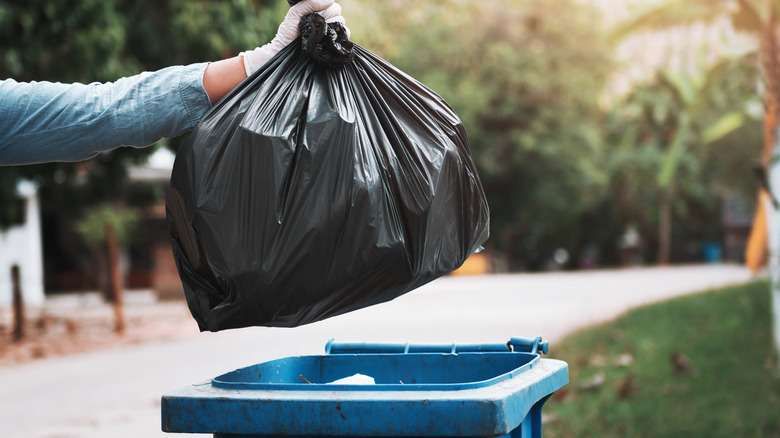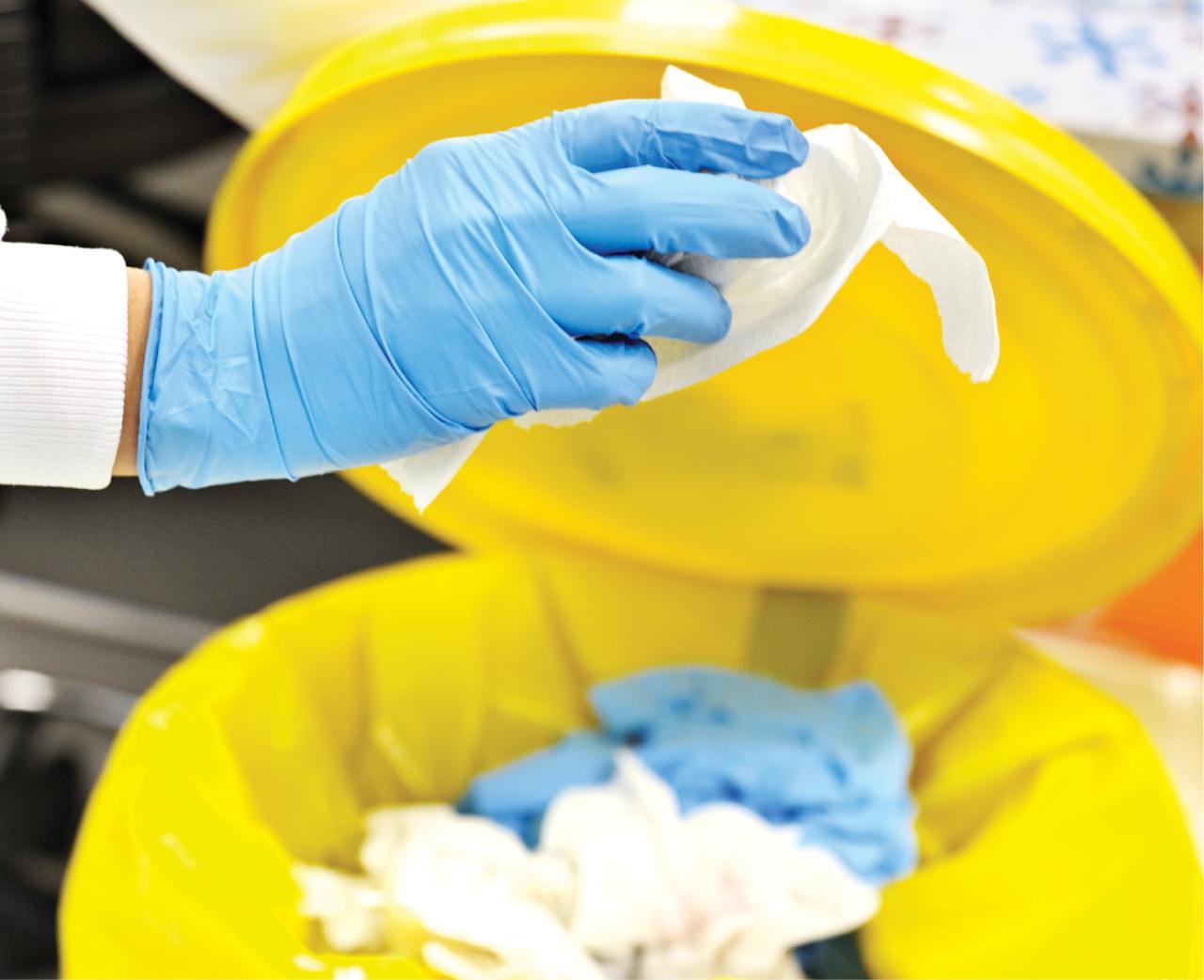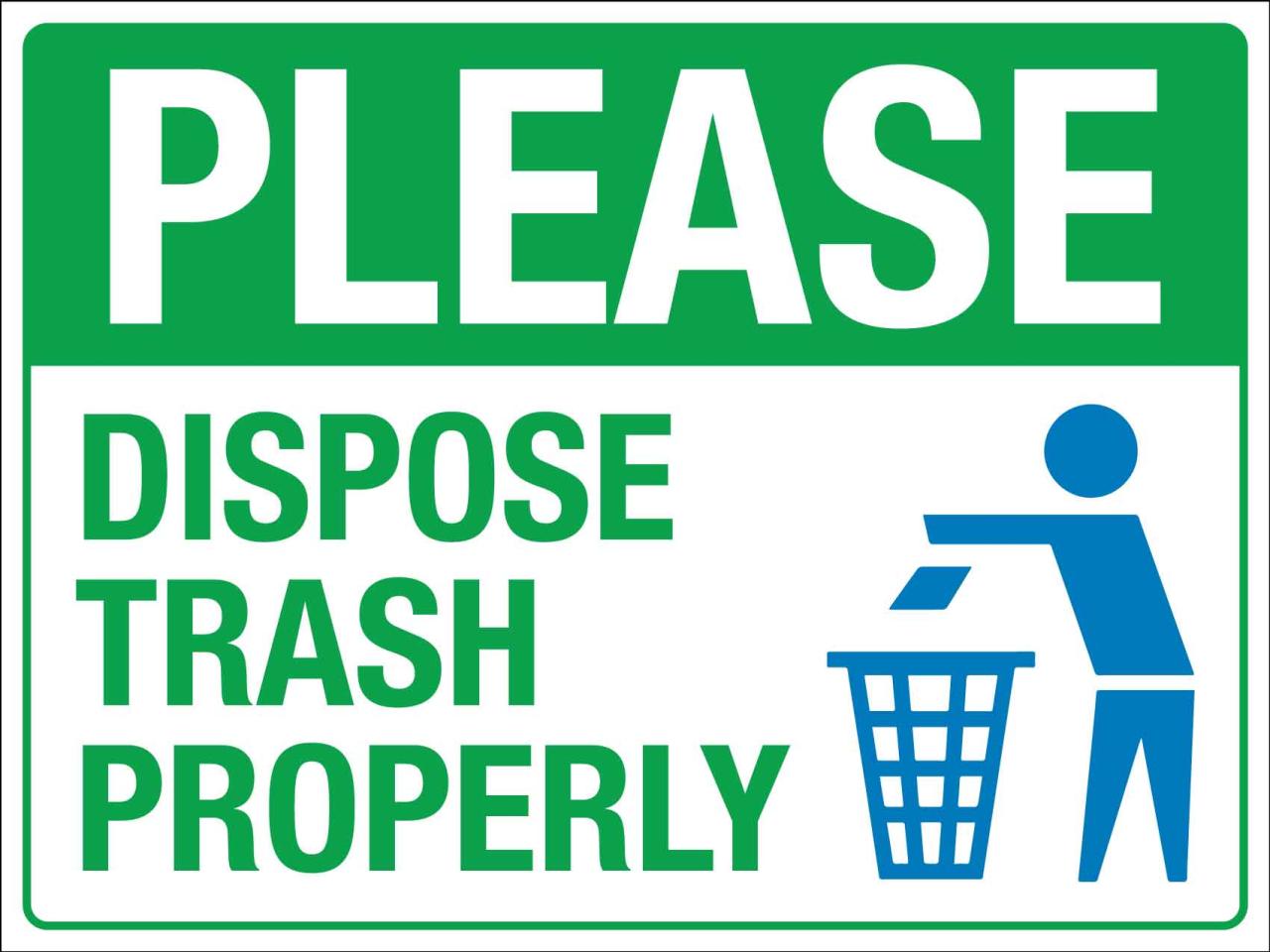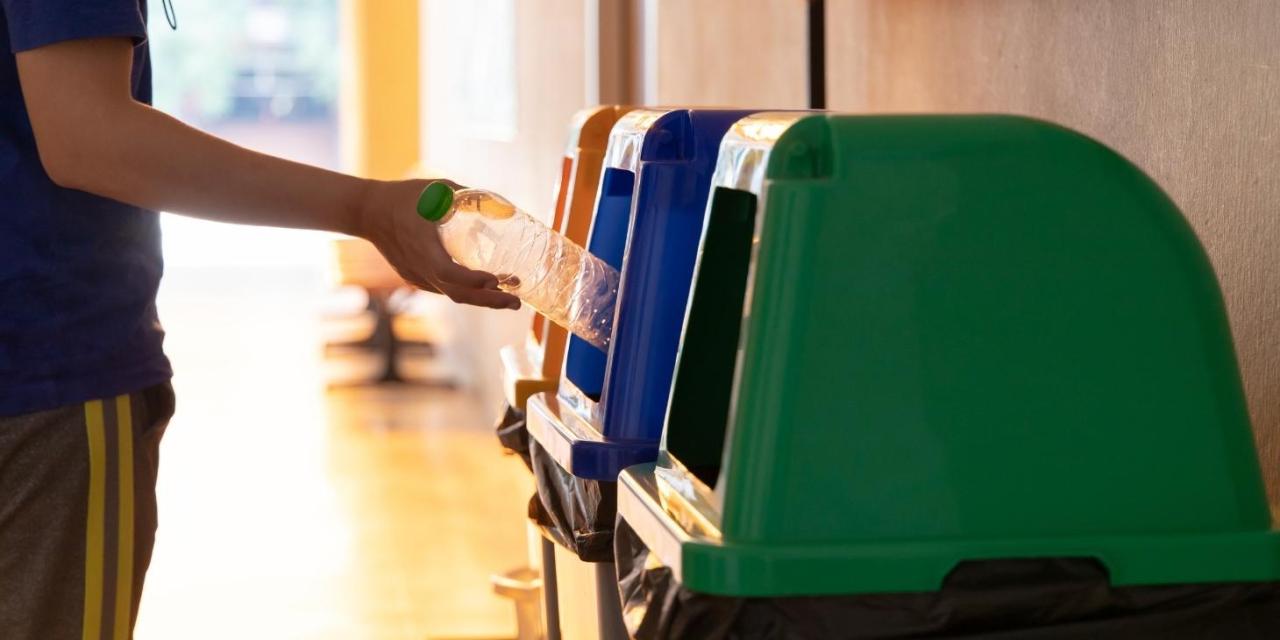Safe Disposal Methods for Acetone

Acetone, a common solvent, requires careful disposal to minimize environmental impact and ensure worker safety. Improper handling can lead to air and water contamination, harming both ecosystems and human health. This section details safe and effective disposal methods for acetone, ranging from simple procedures to more complex chemical processes.
Common Disposal Methods
Proper disposal of acetone involves several methods, each with its own advantages and disadvantages. The best choice depends on the quantity of acetone to be disposed of, the resources available, and the specific regulations in place. Prioritizing environmentally sound practices is crucial.
- Wastewater Treatment Systems: In industrial settings or larger-scale operations, acetone can be safely introduced into wastewater treatment systems designed to handle organic solvents. These systems use biological processes or chemical oxidation to break down the acetone before releasing the treated water. This method is often effective and efficient for substantial volumes, but the treatment plant must have the capacity and appropriate infrastructure for the specific type and amount of acetone being discharged.
- Chemical Neutralization: This method involves reacting acetone with a specific chemical to convert it into a less harmful substance. While effective in some situations, chemical neutralization may produce hazardous byproducts, which need proper disposal. The specific neutralizing agent and disposal procedure must be carefully considered and followed, as incorrect use can lead to dangerous situations.
- Proper Waste Container Disposal: For smaller quantities, acetone can be disposed of in appropriate containers labeled as hazardous waste. The containers must be appropriately sealed and stored according to local regulations. Proper labeling is essential to prevent misidentification and ensure safe handling during transport and disposal. These containers must be transported to designated hazardous waste facilities, following all applicable safety guidelines.
Comparative Analysis of Disposal Methods
The table below summarizes the pros and cons of different disposal methods for acetone. It considers factors like safety, cost-effectiveness, and environmental impact.
| Method | Description | Safety Precautions | Environmental Impact |
|---|---|---|---|
| Wastewater Treatment Systems | Acetone is introduced into a wastewater treatment system designed to handle organic solvents. | Follow established safety protocols for wastewater treatment. Ensure the system is properly maintained. | Generally environmentally friendly if the treatment plant is equipped to handle the acetone. |
| Chemical Neutralization | Acetone is reacted with a neutralizing agent to convert it into a less harmful substance. | Use appropriate personal protective equipment (PPE) and follow specific chemical handling procedures. | Potential for hazardous byproducts; proper disposal of these byproducts is essential. |
| Proper Waste Container Disposal | Acetone is collected in designated hazardous waste containers and transported to appropriate disposal facilities. | Follow all local regulations for handling hazardous materials. Use proper labeling and packaging. | Minimizes environmental impact when handled correctly, transporting to a specialized facility. |
Proper Containerization and Labeling

Proper containerization and labeling are crucial steps in safely managing acetone waste. Incorrect handling can lead to spills, leaks, and inhalation hazards, compromising worker safety and potentially harming the environment. Adhering to strict guidelines ensures responsible disposal and minimizes risks.
Careful selection of containers and clear labeling are vital to prevent accidental exposure and ensure proper disposal procedures are followed. This involves understanding the properties of acetone and choosing appropriate materials and designs for storage and transportation.
Container Selection for Acetone Waste
Choosing the right container is critical for safe acetone storage and disposal. The container must be resistant to the solvent’s corrosive nature and capable of containing any potential leaks or spills. Material selection should prioritize chemical compatibility and durability.
Ideal Container Types
Suitable containers for acetone waste include:
- Closed Plastic Containers: Polyethylene (PE) or high-density polyethylene (HDPE) containers are often preferred for their resistance to acetone and ability to withstand various handling conditions. They provide good containment and are readily available. Ensure the containers are properly sealed to prevent leaks or evaporation.
- Metal Drums or Tanks: Stainless steel or aluminum drums or tanks offer excellent durability and containment, ideal for larger volumes of acetone waste. These are frequently used in industrial settings. However, the choice of metal depends on the specific properties of the acetone and the potential for chemical reactions. Properly secured lids and fittings are necessary to maintain containment.
- Glass Containers: Glass containers are an option, particularly for smaller quantities. They are chemically inert and resistant to many solvents. However, glass can be more fragile than plastic or metal containers, requiring careful handling to avoid breakage.
Container Material Comparison
The following table provides a comparison of different container materials for acetone storage:
| Material | Pros | Cons | Suitability for Acetone |
|---|---|---|---|
| Polyethylene (PE) | Cost-effective, readily available, resistant to acetone, lightweight | May not be as durable as other materials, potential for punctures | High |
| High-Density Polyethylene (HDPE) | Excellent chemical resistance, good durability, relatively strong | Can be more expensive than PE, slightly heavier | High |
| Stainless Steel | Exceptional chemical resistance, high durability, excellent for large quantities | Heavier than other materials, more expensive | Very High |
| Aluminum | Lightweight, good corrosion resistance, good for large volumes | May be less resistant to certain types of acetone than stainless steel | High |
| Glass | Chemically inert, transparent for visibility, good for small quantities | Fragile, not ideal for large volumes, can break easily | Moderate |
Labeling Requirements
Properly labeling acetone containers is essential for safe handling and disposal. Labels should include:
- Hazard Warnings: Clearly indicate the hazardous nature of the contents using appropriate symbols and wording, such as “Flammable Liquid” or “Harmful.” These warnings must be easily visible and legible.
- Acetone Identification: The container must clearly identify the substance as acetone using a descriptive label.
- Disposal Instructions: Include specific instructions for proper disposal, including any local regulations or guidelines.
- Handling Precautions: Include any handling precautions, such as avoiding open flames, sparks, or static electricity.
- Contact Information: Include contact information for emergency response or disposal services.
Environmental Considerations: How To Dispose Of Acetone

Improper disposal of acetone poses significant risks to the environment. Uncontrolled release of acetone can contaminate various ecosystems, impacting both immediate and long-term ecological health. Understanding the potential hazards and adhering to proper disposal procedures are crucial for mitigating these impacts.
The environmental consequences of improper acetone disposal extend beyond immediate harm. Chronic exposure to contaminated water sources and soil can lead to a decline in biodiversity and disrupt the delicate balance of ecosystems.
Impact of Improper Disposal on Water Bodies
Acetone, a volatile organic compound (VOC), can easily enter water bodies through spills, leaks, or improper disposal of contaminated materials. This contamination can have detrimental effects on aquatic life. Exposure to high concentrations of acetone can cause respiratory distress, neurological problems, and even death in aquatic organisms. For instance, fish exposed to acetone-contaminated water may exhibit reduced growth rates and reproductive capabilities. Furthermore, acetone can interfere with the oxygen levels in the water, leading to oxygen depletion and potentially causing fish kills.
Impact of Improper Disposal on Soil
Acetone’s presence in soil can also harm soil microorganisms and plants. Soil organisms, vital for nutrient cycling and decomposition, can be severely affected by acetone contamination. Exposure to high levels of acetone can inhibit their activity, disrupting the natural processes of the soil ecosystem. Furthermore, acetone can affect plant growth by interfering with essential metabolic processes. For example, crops planted in acetone-contaminated soil may exhibit stunted growth, reduced yields, and increased susceptibility to diseases.
Regulations and Hazardous Waste Disposal
Adherence to regulations for hazardous waste disposal is paramount for protecting the environment. Government agencies often set specific limits on the concentration of acetone allowed in wastewater discharge and soil. Failure to comply with these regulations can result in fines and penalties. For example, a company releasing acetone-contaminated wastewater exceeding permitted limits could face substantial penalties, including significant legal and financial repercussions.
Potential Harm to Local Ecosystems
Improper disposal of acetone can have far-reaching consequences for local ecosystems. The contamination of water bodies can impact the entire food chain, affecting fish, birds, and other animals that rely on the water source. Contaminated soil can also affect the health of plants and the organisms that depend on them. For instance, the contamination of a river system with acetone could harm not only the fish populations but also the birds that feed on them and the human communities that depend on the river for drinking water. Furthermore, the accumulation of acetone in the environment can potentially contribute to broader environmental issues, such as air pollution and climate change.
Personal Protective Equipment (PPE)

Proper handling and disposal of acetone necessitates the use of appropriate Personal Protective Equipment (PPE) to safeguard personnel from potential hazards. Failure to use suitable PPE can lead to skin irritation, eye damage, and respiratory problems. Careful consideration of the specific conditions of acetone handling is crucial in selecting the right PPE.
Safe handling of acetone requires a proactive approach to protecting personnel. The appropriate selection of PPE is contingent upon the volume, concentration, and potential exposure duration of the acetone being managed. This proactive approach minimizes the risk of adverse health effects.
Necessary PPE for Acetone Handling
Adequate PPE is critical for protecting personnel from the potential risks associated with acetone. This includes protection for skin, eyes, and respiratory systems. The specific PPE required will depend on the volume and concentration of acetone being handled. The type and level of protection must be sufficient to prevent exposure to harmful levels of acetone.
Specific Examples of PPE
For skin protection, gloves made from nitrile or neoprene are recommended. These materials offer a high degree of resistance to acetone penetration. Examples include nitrile examination gloves and neoprene gloves. For eye protection, safety glasses or chemical goggles are essential to prevent acetone from entering the eyes. Respirators are necessary when handling large quantities of acetone or in poorly ventilated areas. Examples of suitable respirators include half-mask respirators and full-face respirators, which offer more complete protection.
Importance of PPE Selection
The selection of PPE is crucial for effective protection. The quantity and concentration of acetone being handled will significantly impact the required level of protection. Higher concentrations and larger volumes demand more robust PPE. Improper selection can compromise safety and lead to exposure.
PPE Recommendations Based on Scenarios
| Scenario | Gloves | Eye Protection | Respiratory Protection |
|---|---|---|---|
| Small quantities of low-concentration acetone in a well-ventilated area | Nitrile or neoprene gloves | Safety glasses | None required |
| Large quantities of high-concentration acetone in a poorly ventilated area | Chemical-resistant gloves (e.g., nitrile, neoprene, or butyl) | Chemical goggles | Half-mask respirator with organic vapor cartridges |
| Acetone spills or leaks | Chemical-resistant gloves (e.g., nitrile, neoprene, or butyl) | Chemical goggles or face shield | Full-face respirator with organic vapor cartridges |
Emergency Procedures

Acetone, while a useful solvent, presents potential hazards during handling. Understanding and implementing proper emergency procedures is crucial for mitigating risks associated with spills or leaks. These procedures ensure the safety of personnel and minimize environmental impact.
Effective emergency response relies on swift action and adherence to established protocols. This section details the steps necessary for handling acetone spills or leaks, emphasizing containment, cleanup, and proper notification procedures.
Spill and Leak Handling Procedures
Proper spill management is paramount in minimizing the environmental and health risks associated with acetone spills. A swift and methodical approach is crucial for effective containment and cleanup.
- Initial Assessment and Isolation: Immediately assess the extent of the spill and the surrounding area. Isolate the affected area to prevent further exposure and ensure the safety of personnel. This includes establishing a perimeter and warning other personnel to avoid the area. A clear and concise warning system is essential.
- Containment: Contain the spill using appropriate absorbent materials. Common absorbents include vermiculite, sand, or specialized chemical absorbents. The choice of absorbent depends on the spill size and the surrounding environment. Carefully place the absorbent material to prevent spreading the spill and ensure complete containment.
- Cleanup: Carefully collect the absorbed acetone and dispose of it according to the designated procedures. Use appropriate tools and equipment for the collection and transport of the absorbed material. Ensure that the contaminated absorbent material is properly labeled and disposed of as hazardous waste. Proper disposal methods are critical to minimize environmental impact. For larger spills, consider using specialized vacuum equipment.
- Ventilation: Ensure adequate ventilation in the area to dissipate any remaining acetone vapors. Open windows and doors or utilize exhaust fans to aid in the removal of the solvent from the air. This is especially crucial for preventing inhalation hazards.
Emergency Contact Information
Prompt notification of appropriate authorities is vital in the event of a spill or leak. This ensures swift and effective response and reduces the potential impact of the incident.
| Type of Emergency | Contact Information |
|---|---|
| Environmental Agencies | [Insert local environmental agency contact information here] |
| Hazardous Material Response Teams | [Insert local hazardous material response team contact information here] |
Step-by-Step Emergency Response
A well-defined step-by-step procedure facilitates a coordinated and efficient response.
- Assess the Situation: Determine the extent of the spill, identify potential hazards, and evaluate the safety of the area.
- Isolate the Area: Establish a perimeter and warn personnel to avoid the affected area.
- Contain the Spill: Use appropriate absorbent materials to contain the spill and prevent further spread.
- Notify Authorities: Contact the relevant environmental agencies or hazardous material response teams immediately.
- Cleanup: Carefully collect the contaminated absorbent materials and dispose of them according to established procedures.
- Ventilation: Ensure adequate ventilation to dissipate any remaining vapors.
- Record Keeping: Document the incident, including the date, time, location, and nature of the spill, along with any actions taken.
Waste Disposal Regulations
Acetone disposal regulations vary significantly depending on the region or country. These regulations are crucial for protecting human health and the environment. Adherence to these guidelines is essential for preventing contamination and ensuring responsible waste management practices.
Understanding and complying with local and national regulations is paramount for any entity handling acetone. Failure to do so can lead to severe penalties and legal repercussions.
Relevant Regulations and Guidelines, How to dispose of acetone
Proper disposal of acetone requires adherence to specific regulations. These regulations vary geographically, reflecting differing environmental priorities and standards. National and regional agencies often publish guidelines and standards for managing hazardous waste.
- In the United States, the Environmental Protection Agency (EPA) sets forth regulations for the disposal of hazardous materials, including acetone. Specific requirements might vary based on the quantity and method of disposal. For instance, small quantities might be handled differently from large-scale industrial operations.
- Similarly, in the European Union, the European Chemicals Agency (ECHA) plays a crucial role in establishing regulations for the handling and disposal of chemical substances, including acetone. These regulations typically involve detailed reporting requirements, stringent safety procedures, and specific disposal methods.
- International standards, like those set by the Organization for Economic Co-operation and Development (OECD), offer guidance for managing hazardous waste globally. However, specific national regulations often supersede international guidelines.
Examples of Hazardous Waste Disposal Regulations
Regulations for hazardous waste disposal often involve stringent requirements. These requirements frequently include detailed documentation, specific containerization, and adherence to approved disposal methods.
- Documentation requirements often include detailed records of the waste’s generation, handling, and ultimate disposal location. These records are crucial for traceability and for regulatory compliance.
- Specific containerization procedures may involve using designated containers, ensuring proper labeling, and preventing leakage or spills. These measures are critical for maintaining safety and preventing environmental contamination.
- Disposal methods might involve specialized treatment facilities or regulated landfills, with strict procedures to manage and monitor waste during transport and processing. These facilities are typically licensed and monitored to ensure compliance with safety and environmental standards.
Importance of Adhering to Local and National Laws
Adherence to local and national regulations is critical for responsible waste management. Non-compliance can lead to serious consequences, including hefty fines and potential legal action.
- Compliance with regulations safeguards human health by preventing exposure to hazardous materials and minimizing environmental damage.
- Proper waste disposal prevents the contamination of water sources and soil, safeguarding ecosystems and public health.
- Adherence demonstrates a commitment to environmental stewardship and responsible business practices.
Penalties for Non-Compliance
Non-compliance with waste disposal regulations can result in significant penalties. These penalties can range from fines to legal action and potential imprisonment.
- Fines can vary considerably depending on the severity of the violation and the specific regulations broken. These penalties can be substantial, particularly for large-scale violations or repeated offenses.
- Legal action may include lawsuits from environmental protection agencies or other affected parties. This can lead to additional financial costs and reputational damage.
- In some cases, non-compliance can result in criminal charges and imprisonment, especially if the violation is deemed intentional or poses significant risk to public health or the environment.
Alternative Uses and Recycling Options

Acetone, while often viewed as a waste product, possesses valuable properties that enable its reuse and recycling in various applications. This section details the possibility of reclaiming acetone, and illustrates alternative applications for its re-use in both industrial and laboratory contexts. Proper preparation and handling are crucial to ensure safe and effective recycling.
Recycling acetone offers significant environmental and economic benefits, minimizing waste and conserving resources. By recovering acetone from waste streams, businesses can reduce their environmental footprint and potentially realize cost savings associated with raw material procurement.
Acetone Recycling Processes
Proper preparation of acetone for recycling involves several key steps. First, the acetone must be separated from other contaminants present in the waste stream. Distillation is a common method for purification. This process involves heating the mixture to vaporize the acetone, then condensing the vapor back into a liquid form, separating out any impurities. Filtration and other separation techniques may also be employed, contingent on the specific composition of the waste stream.
Alternative Applications of Recycled Acetone
Recycled acetone finds applications across various industries and laboratories. Its solvent properties make it suitable for numerous industrial processes.
- Industrial Cleaning and degreasing: Acetone’s ability to dissolve fats, oils, and resins makes it a valuable cleaning agent in manufacturing and maintenance applications. Its effectiveness in removing contaminants from metal parts and equipment is well-established in industries like automotive and aerospace.
- Paint and Coating Removal: The use of acetone as a paint stripper is widespread, owing to its ability to dissolve various types of paints and coatings. This allows for the efficient removal of old paint for repainting or refurbishment.
- Laboratory Applications: Acetone is frequently used as a solvent in chemical laboratories. In analytical chemistry, it is employed for dissolving substances and preparing solutions. In organic synthesis, it serves as a reaction medium. Its purity and stability make it a valuable reagent.
Preparation for Recycling
Properly preparing acetone for recycling ensures its quality and suitability for re-use. Key steps in the preparation process are Artikeld below:
- Contaminant Removal: Ensure the acetone is free from significant contaminants. Impurities can affect the purity and effectiveness of the recycled product.
- Purification: Employ appropriate purification techniques, such as distillation, to remove any remaining impurities. The level of purification depends on the intended application.
- Quality Control: Regularly test the purified acetone to ensure it meets the required specifications for the intended application. This includes determining the acetone’s purity and other relevant properties.
FAQ Compilation
How to dispose of acetone – What are the most common safe disposal methods for acetone?
Common safe disposal methods include chemical neutralization (with appropriate chemicals), proper waste container disposal in designated hazardous waste receptacles, and recycling where feasible.
What types of containers are suitable for storing acetone waste?
Durable, leak-proof containers made of materials like polyethylene or polypropylene are ideal. Always check for compatibility with acetone before use.
What are the penalties for non-compliance with acetone disposal regulations?
Penalties for non-compliance can vary depending on the region and the specific violation. They can range from fines to legal action. It’s essential to consult local regulations for precise details.
What are some alternative uses for acetone?
Acetone can be recycled or reused in various industrial and laboratory applications, depending on its purity and intended use. Consult with relevant authorities for specifics.